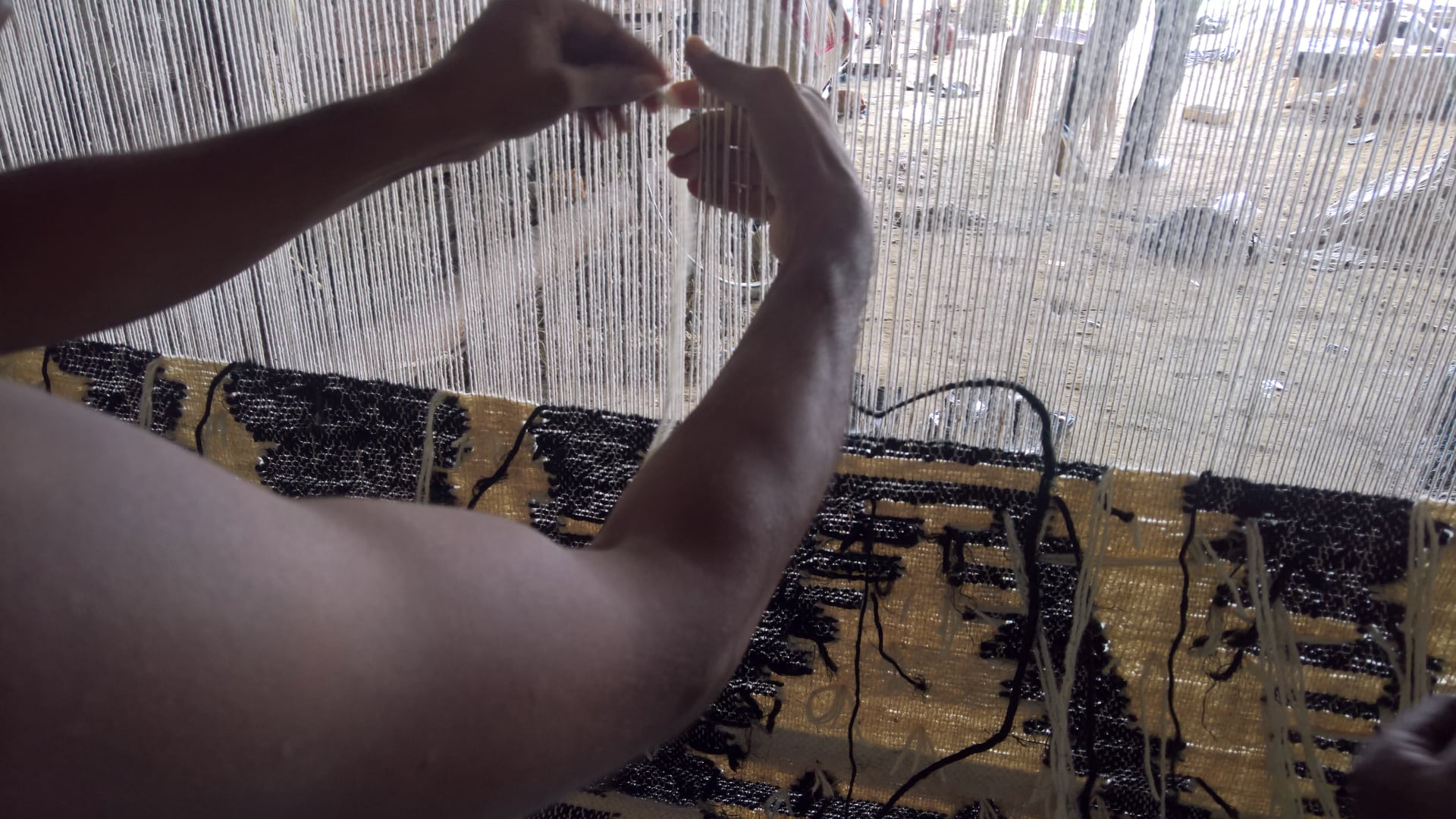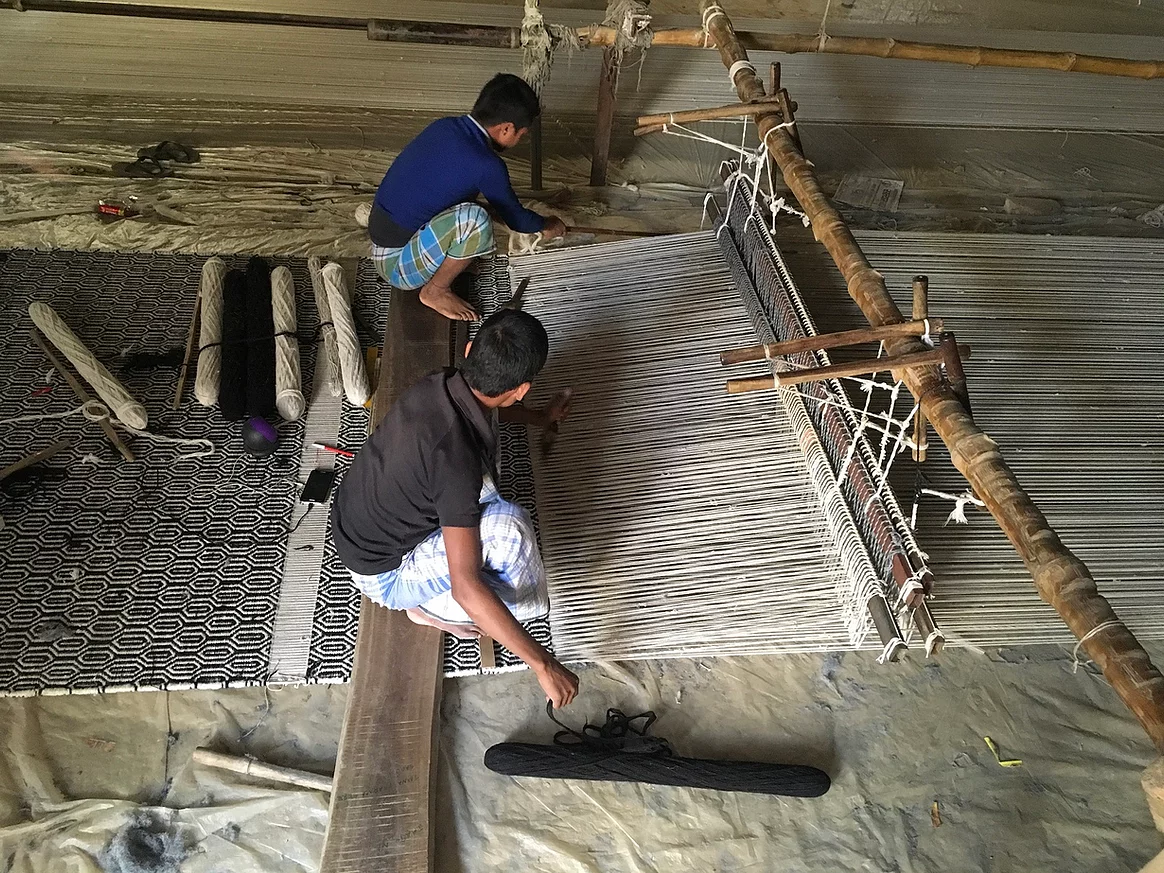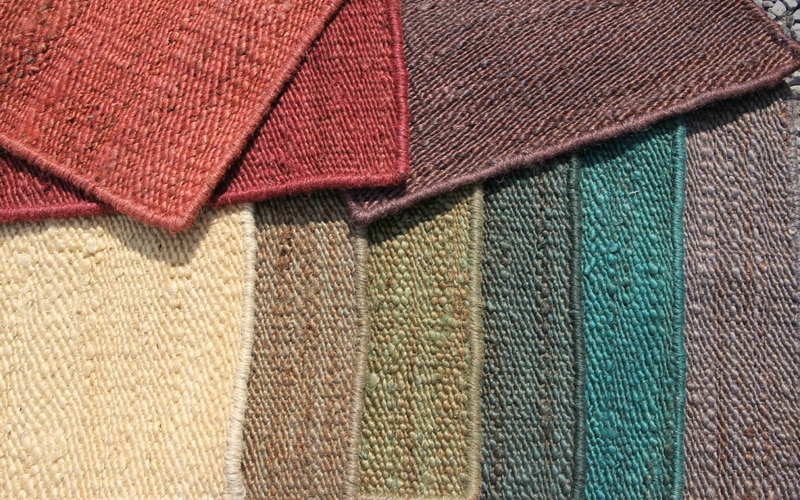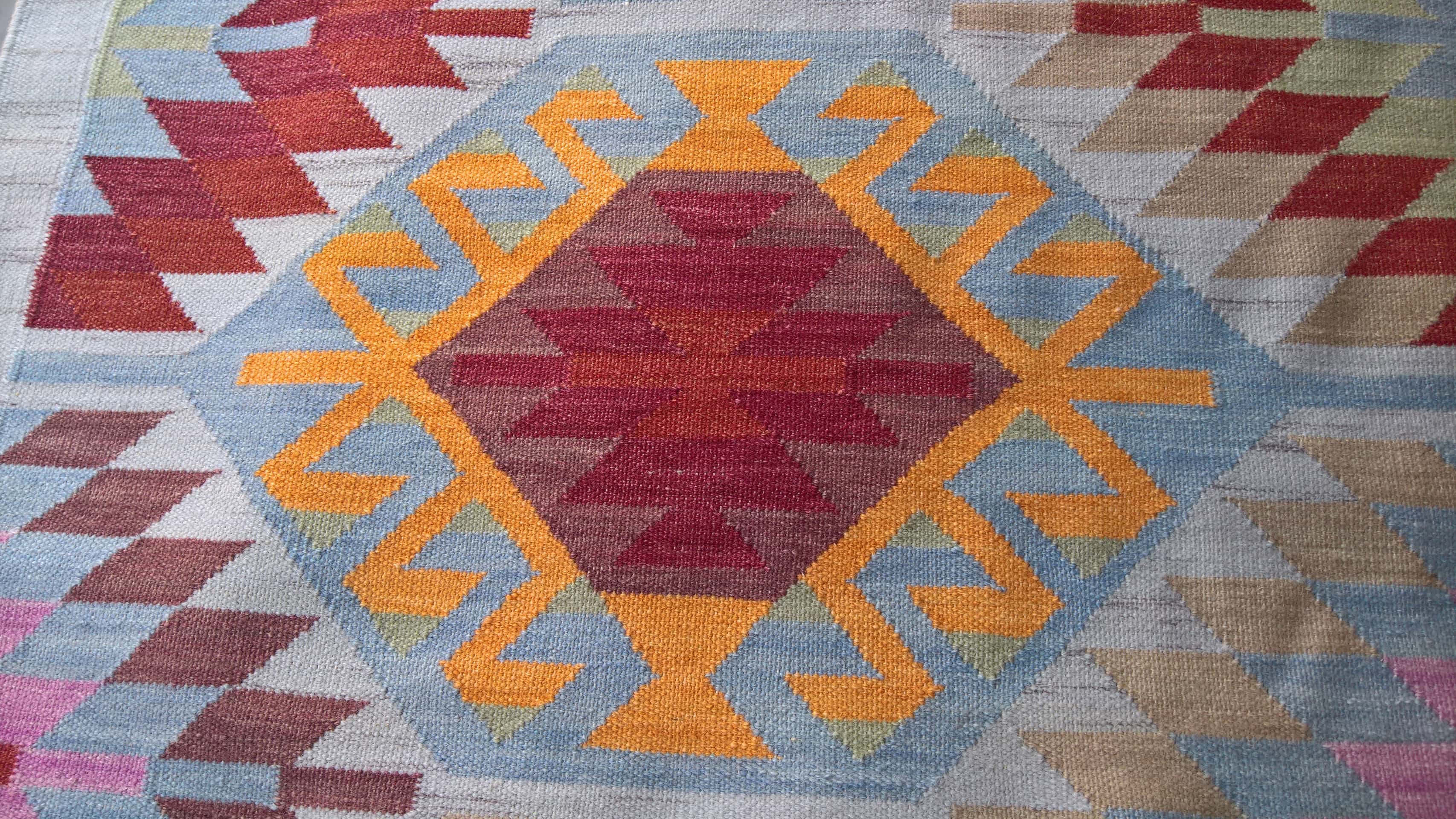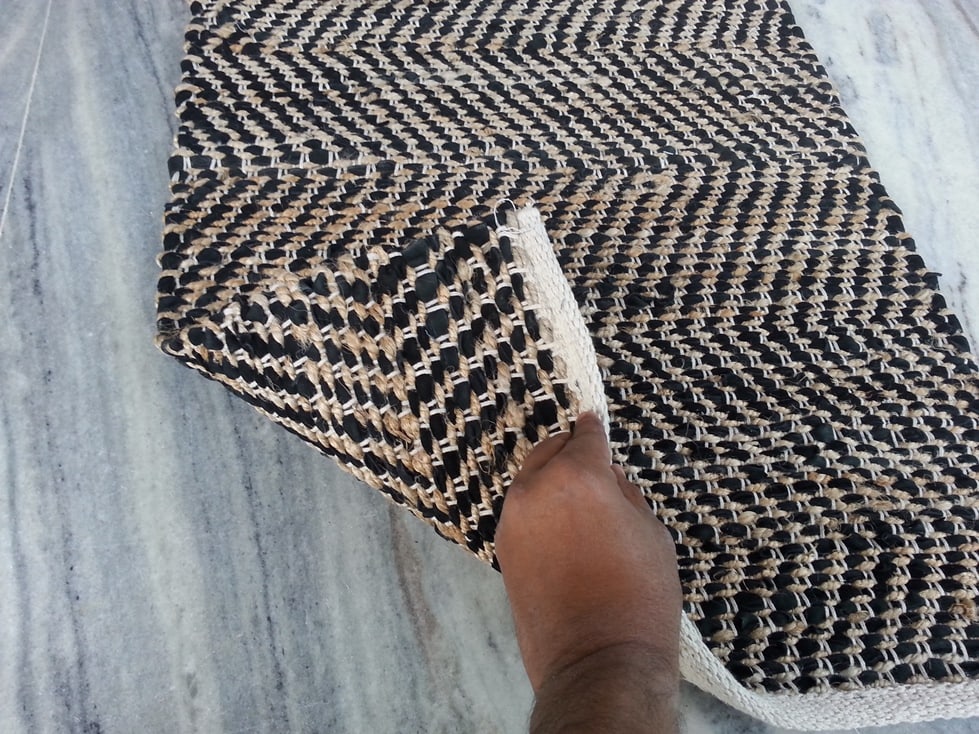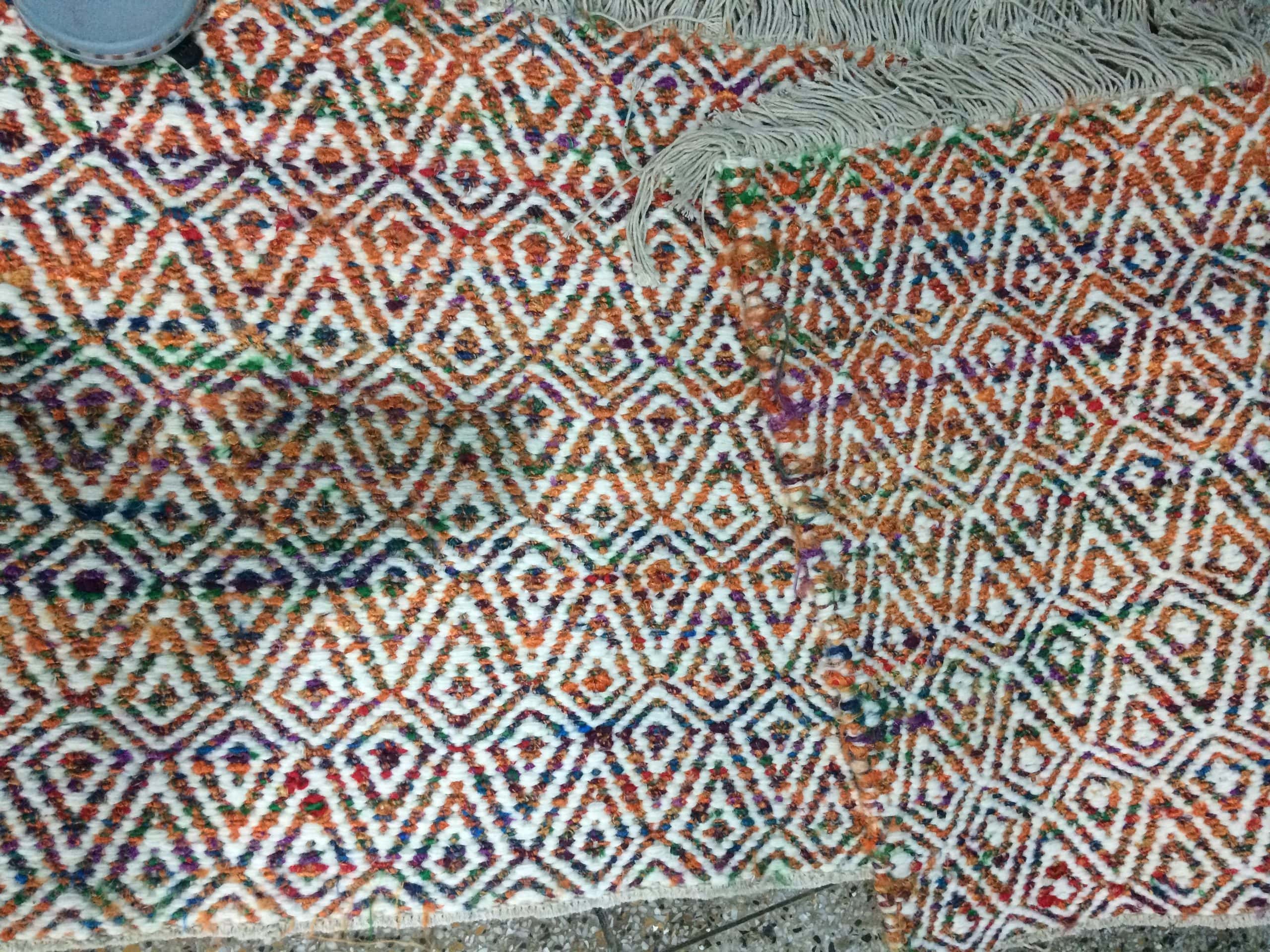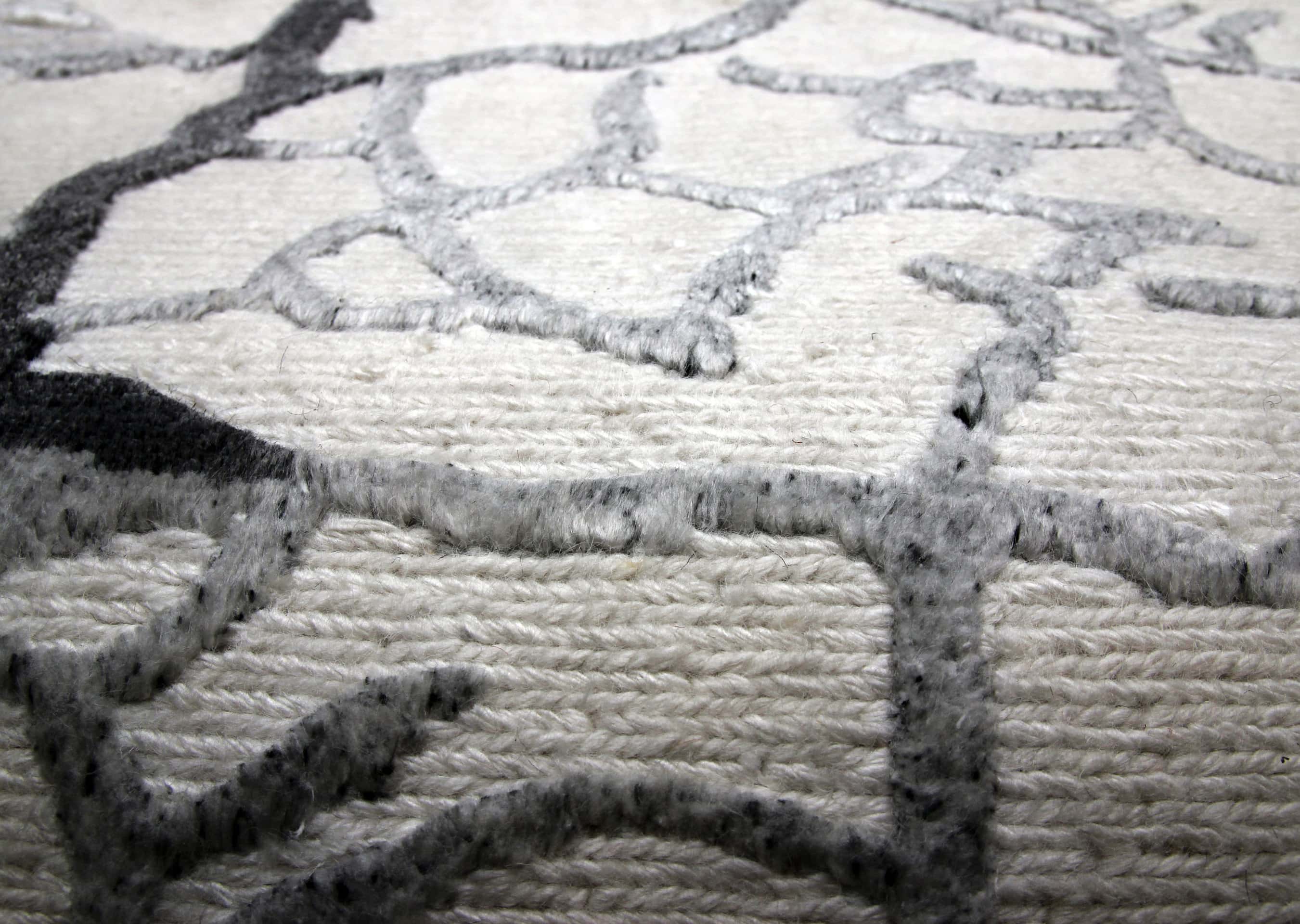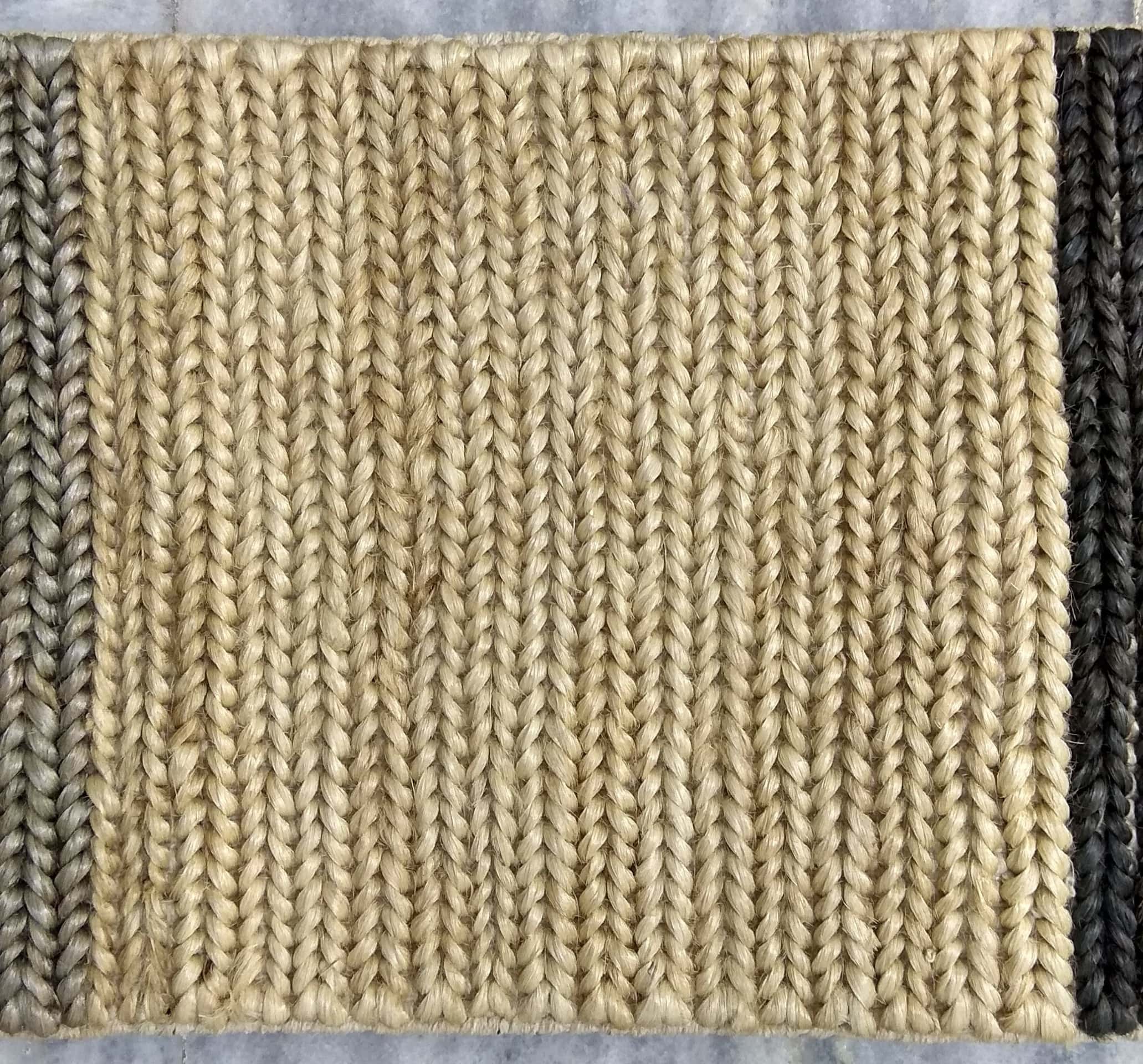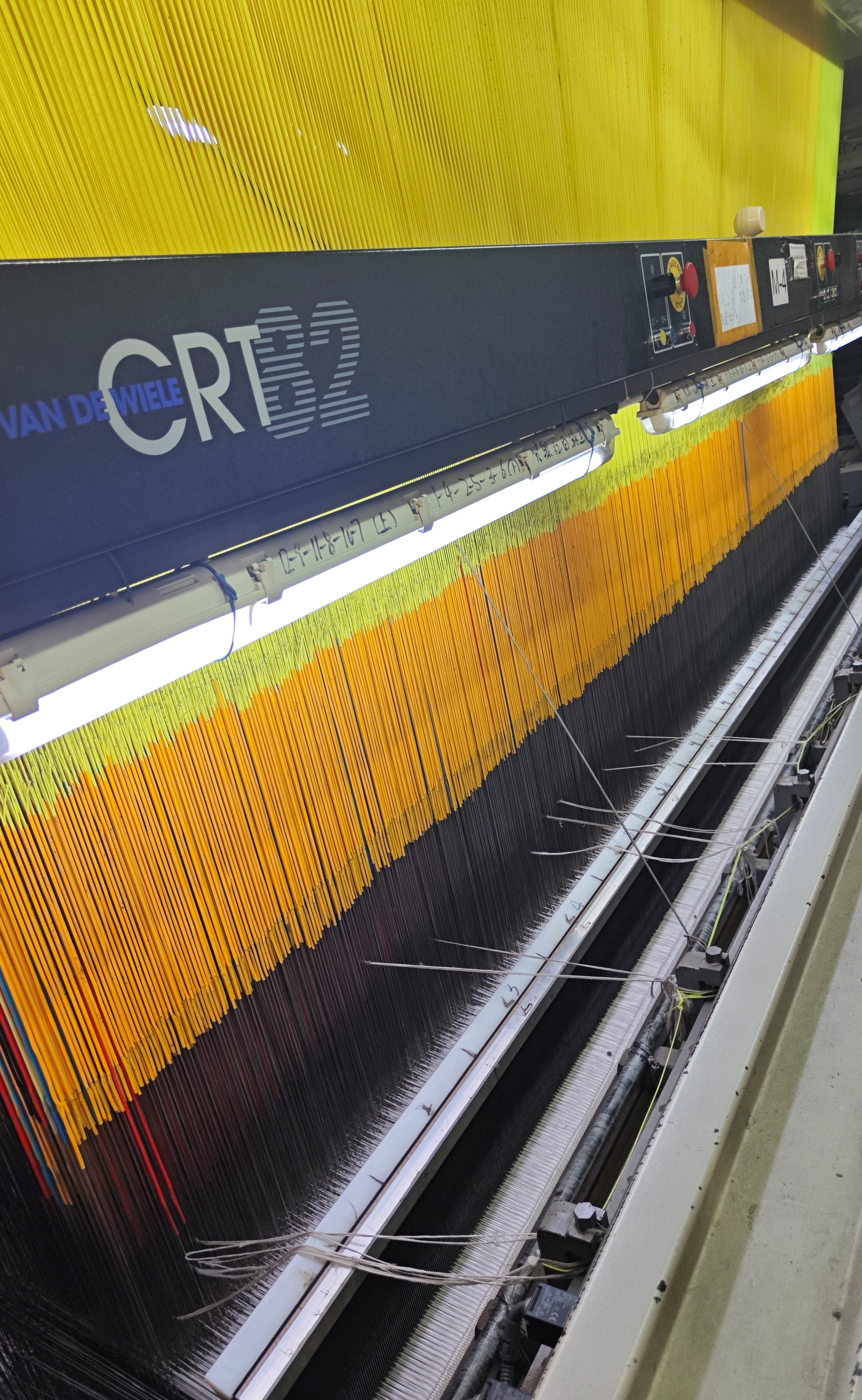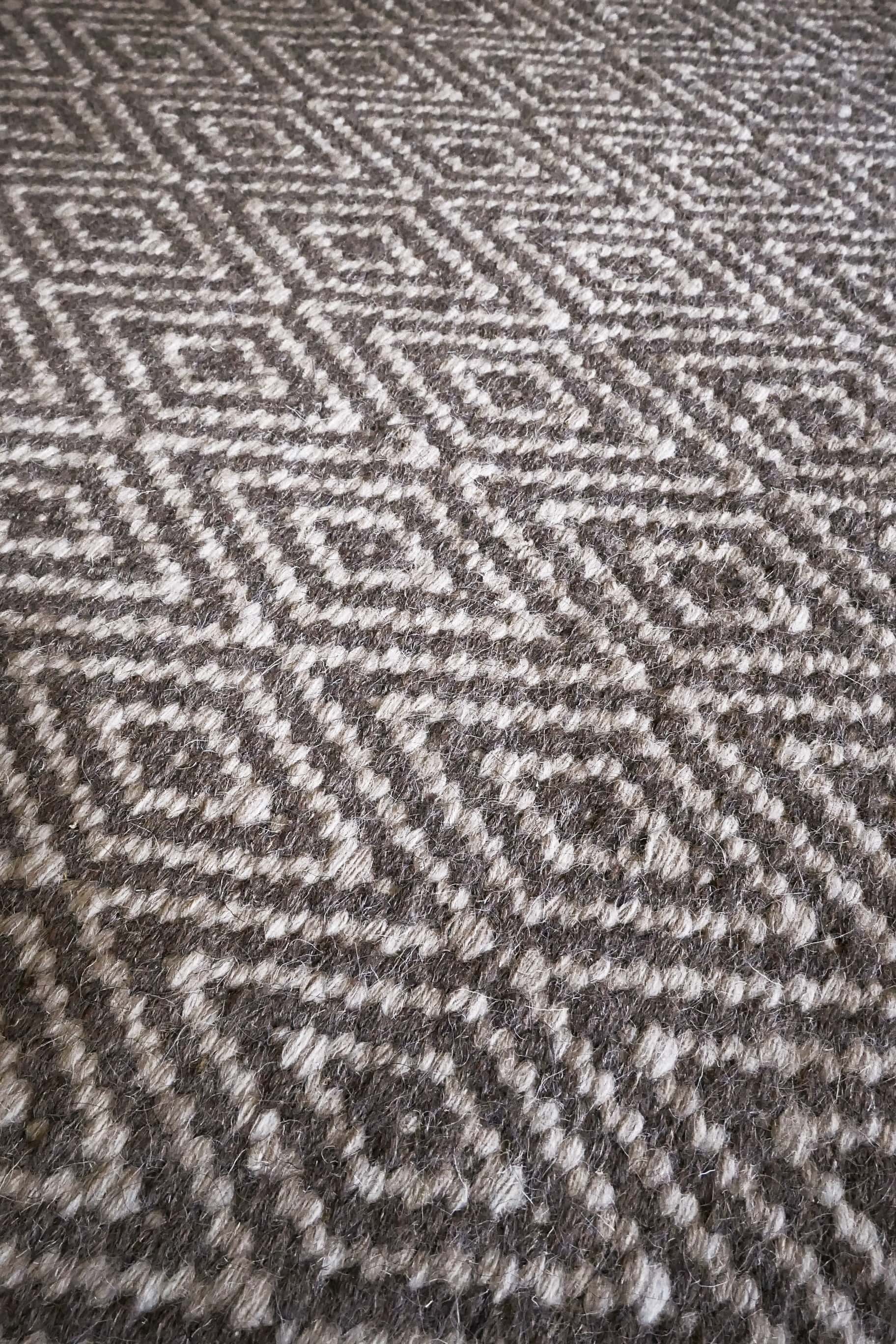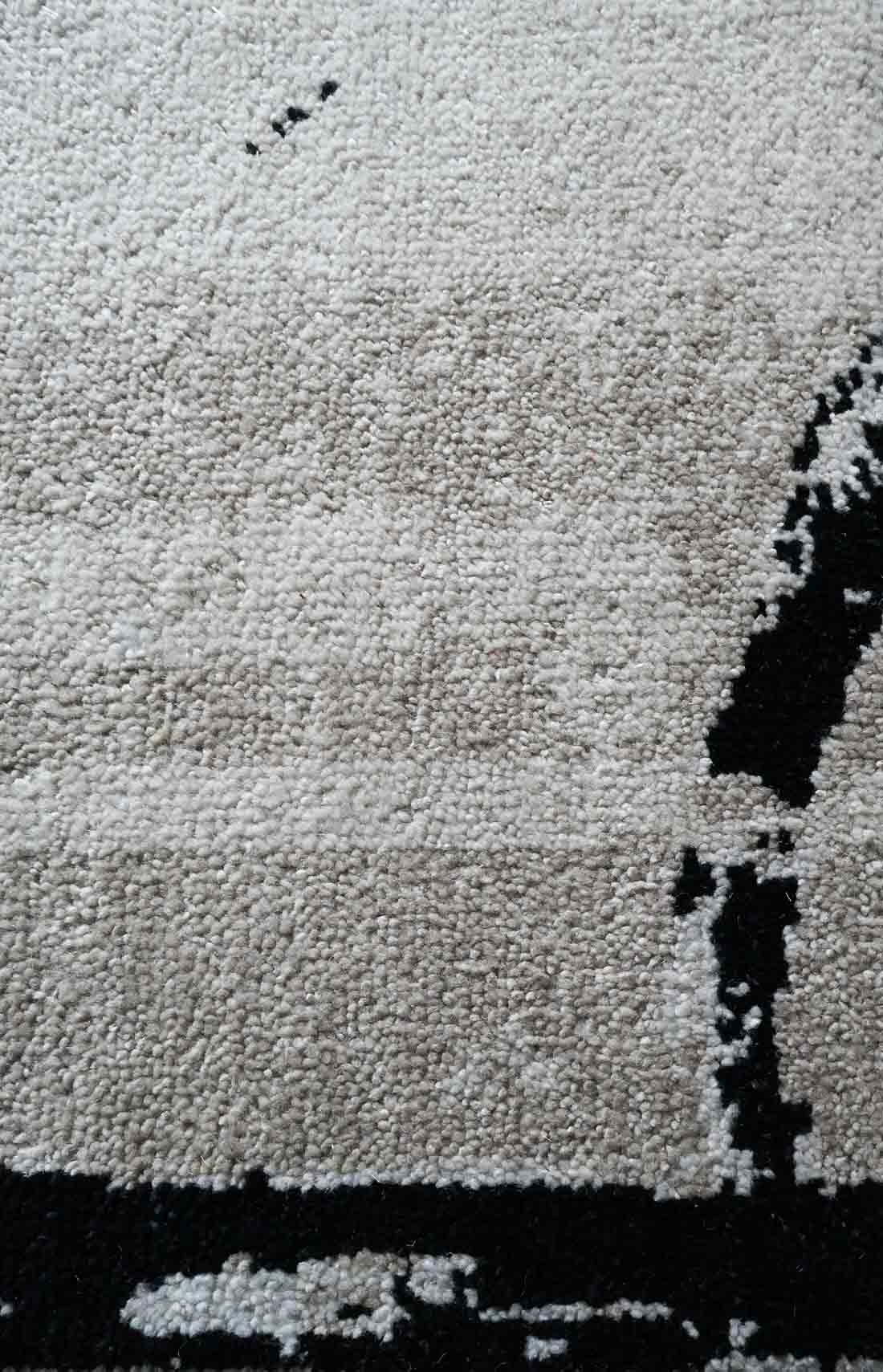The Kilim and the Flatweave
Flat woven rugs
Considered as the oldest form of rug making (nearly 10,000 years old), the kilim rug technique spread throughout Asia and the Mediterranean basin thanks to the nomadic tribes of the Caucasus and Anatolia.
The looms are usually horizontal and laid on the ground. The large family of flat woven rugs is known generically as “Flatweave”. Wide looms are rather rare, as they are laid flat on the floor and require some space between the walls and columns of the weaving room.
The design is made through the interweaving of different coloured weft threads between the warp threads, both made of cotton.
Kilims are flat because they do not have pile and their patterns are more geometric.
The thickness of this type of rug depends on the thickness of the yarn used. The thicker the yarn, the heavier the kilim and the fewer the patterns. Kilim weaving is very suitable for repetitive, rather geometric designs. Indians give several names to flatweave: flatweave, handwoven, kilim, dhurry and drugget.

